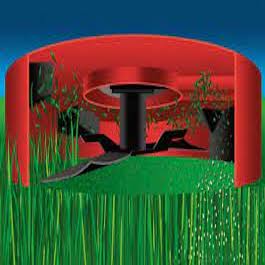Cover crops as green mulching for weed management in rice

Accepted: 26 July 2021
Appendix: 70
HTML: 22
All claims expressed in this article are solely those of the authors and do not necessarily represent those of their affiliated organizations, or those of the publisher, the editors and the reviewers. Any product that may be evaluated in this article or claim that may be made by its manufacturer is not guaranteed or endorsed by the publisher.
A field study was carried out in 2017 and 2018 in two Italian rice farms (at Livorno Ferraris and Rovasenda) to assess the effect of using cover crops as green mulching on weed control and rice yield. Three different rice fields were sown in each site after rice harvest with either Vicia villosa, Lolium multiflorum, or a mixture of both (V. villosa 40% + L. multiflorum 60%); at Rovasenda, a small percentage of Brassica napus and Triticale was also present in the mixture. An additional field at both sites without cover crop was considered as a control reference. Rice was broadcasted sown within the cover crop in May. After few days, the cover crop was terminated in half of each field using a roller-crimper, while in the other half, it was terminated by shredding. Within 10 days, the fields were flooded for about a week to promote the degradation of the cover crop biomass. Then, the fields were cultivated in flooding conditions without further weed control. Weed density and weed cover were evaluated three times during the growing season. At harvest, rice yield and harvest index were determined. Mixed nested Mixed nested ANOVAs were performed for each site to assess the effect of cover crop species, termination technique, and the interaction between cover crop and year. L. multiflorum showed high biomass before termination, while V. villosa had a more variable development. At Rovasenda, V. villosa growth was limited because of the combination of scarce emergence due to sod-seeding and frost damage. In general, green mulching significantly affected weed density. The best weed suppression was observed with L. multiflorum and mix at Rovasenda, with values of weed density <40 plants m–2 recorded in 2018. At both sites, rice yield was variable in the two years. The highest rice yield (>5 t ha–1) was observed in 2018 in the shredded mixture at Rovasenda and in V. villosa at Livorno Ferraris in 2017. Generally, control fields showed lower yields (1-3 t ha–1) at both sites. The termination methods did not significantly affect both weed density and rice yield. The results highlighted that green mulching could reduce weed infestations, even though alone is not able to avoid weed development completely. Some critical issues of the technique were observed, such as the need for a good cover crop establishment which eventually results in abundant biomass production and significant weed suppression.
Highlights
- Green mulching reduces weed pressure, but it should be integrated with other weed control techniques.
- Hairy vetch showed poor establishment because of the combination of scarce emergence due to sod-seeding and low temperatures.
- Italian ryegrass was more tolerant to low temperatures and showed a good cover that contained weed growth.
- Cover crop mixture showed variable results with higher suppression probably related to the number of cover crop species present in the mixture.
- The termination methods (crimping and shredding) did not affect weed density and rice yield.
How to Cite

This work is licensed under a Creative Commons Attribution-NonCommercial 4.0 International License.
PAGEPress has chosen to apply the Creative Commons Attribution NonCommercial 4.0 International License (CC BY-NC 4.0) to all manuscripts to be published.

 https://doi.org/10.4081/ija.2021.1850
https://doi.org/10.4081/ija.2021.1850







